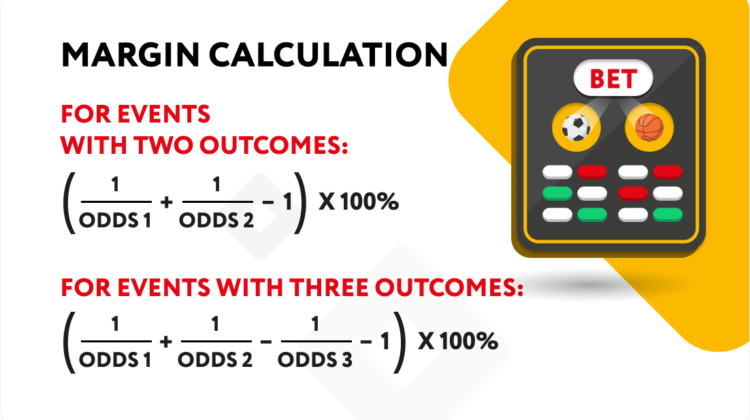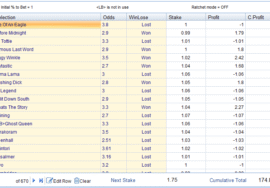
Understanding odds
Let’s break down betting odds. If you’re just starting to explore sports betting, understanding odds is absolutely key. Trust me, once you get this, everything else starts to click. I remember when I first started, odds seemed like some secret code, but it’s really not that complicated once you understand the basics. There are three main types you’ll run into: Decimal, Fractional, and American. Let’s decode each one.
Decimal Odds: Simple and Straightforward
Decimal odds are super popular, especially in Europe, and honestly, they’re the easiest to grasp. You’ll see them written like 1.50, 2.20, or 3.75. The number you see represents exactly how much you’ll get back for every $1 you bet, including your original stake.
Let’s say you see decimal odds of 2.50 for a team to win. If you bet $10 and they win, you calculate your winnings like this:
- Potential Payout = Stake x Decimal Odds
- Potential Payout = $10 x 2.50 = $25
That $25 includes your original $10 bet plus $15 in profit. So, a quick takeaway: with decimal odds, just multiply your bet by the odds to see the total return.
And what about probability? Decimal odds also give you a straightforward way to see the implied probability of an event happening. Here’s the formula:
- Implied Probability = 1 / Decimal Odds x 100
Using our example of 2.50 odds:
- Implied Probability = 1 / 2.50 x 100 = 40%
This means the odds of 2.50 suggest that the event has a 40% chance of happening, according to the bookmaker.
Fractional Odds: The Traditional View
Fractional odds are more common in the UK and have been around for ages. They look like fractions, such as 1/2, 5/1, or 11/10. Fractional odds show you the profit relative to your stake. The first number (numerator) is how much you could win, and the second number (denominator) is how much you need to bet to win that amount.
Let’s take fractional odds of 3/1 (said as “three to one”). This means for every $1 you bet, you could win $3 in profit, plus you get your original stake back. So, if you bet $10 at 3/1 and win:
- Profit = (Stake / Denominator) x Numerator
- Profit = ($10 / 1) x 3 = $30
- Total Payout = Profit + Stake
- Total Payout = $30 + $10 = $40
So, a $10 bet at 3/1 gives you a total of $40 back, which is $30 profit plus your $10 stake.
To figure out the implied probability from fractional odds, it’s a little more involved but still manageable:
- Implied Probability = Denominator / (Denominator + Numerator) x 100
Using our 3/1 odds example:
- Implied Probability = 1 / (1 + 3) x 100 = 25%
So, 3/1 fractional odds imply a 25% chance of the event happening.
American Odds: Positives and Negatives
American odds, used mainly in the United States, can look a bit different because they use plus (+) and minus (-) signs. They’re based on a $100 bet as a standard.
- Negative Odds (-): These are for favorites and show you how much you need to bet to win $100 in profit. For example, odds of -200 mean you need to bet $200 to win $100 in profit (plus your stake back).
- If you bet $200 at -200 and win:
- Profit = Stake / (Odds / 100) (ignore the minus sign for calculation)
- Profit = $200 / (200 / 100) = $100
- Total Payout = Profit + Stake
- Total Payout = $100 + $200 = $300
- If you bet $200 at -200 and win:
- Positive Odds (+): These are for underdogs and show you how much profit you could win for a $100 bet. For example, odds of +150 mean if you bet $100, you could win $150 in profit (plus your stake back).
- If you bet $100 at +150 and win:
- Profit = Stake x (Odds / 100)
- Profit = $100 x (150 / 100) = $150
- Total Payout = Profit + Stake
- Total Payout = $150 + $100 = $250
- If you bet $100 at +150 and win:
To calculate implied probability from American odds, you need to use slightly different formulas depending on whether the odds are positive or negative:
- For Negative Odds:
- Implied Probability = (Odds / (Odds + 100)) x 100 (ignore the minus sign for calculation)
- Using -200 odds:
- Implied Probability = (200 / (200 + 100)) x 100 = 66.67% (approximately)
- For Positive Odds:
- Implied Probability = (100 / (Odds + 100)) x 100
- Using +150 odds:
- Implied Probability = (100 / (150 + 100)) x 100 = 40%
Why This Matters for Players
Understanding these different types of odds and how they work is more about making informed decisions. When you see odds, you’re seeing probabilities and potential returns. Whether you prefer the simplicity of decimal odds, the tradition of fractional, or the American style, the key is to know how to read them and understand what they mean for your bets.
Take some time to practice converting between these formats and calculating payouts and probabilities. It might seem a bit much at first, but it’ll become second nature before you know it. And trust me, having this foundation will really elevate your sports betting game.








